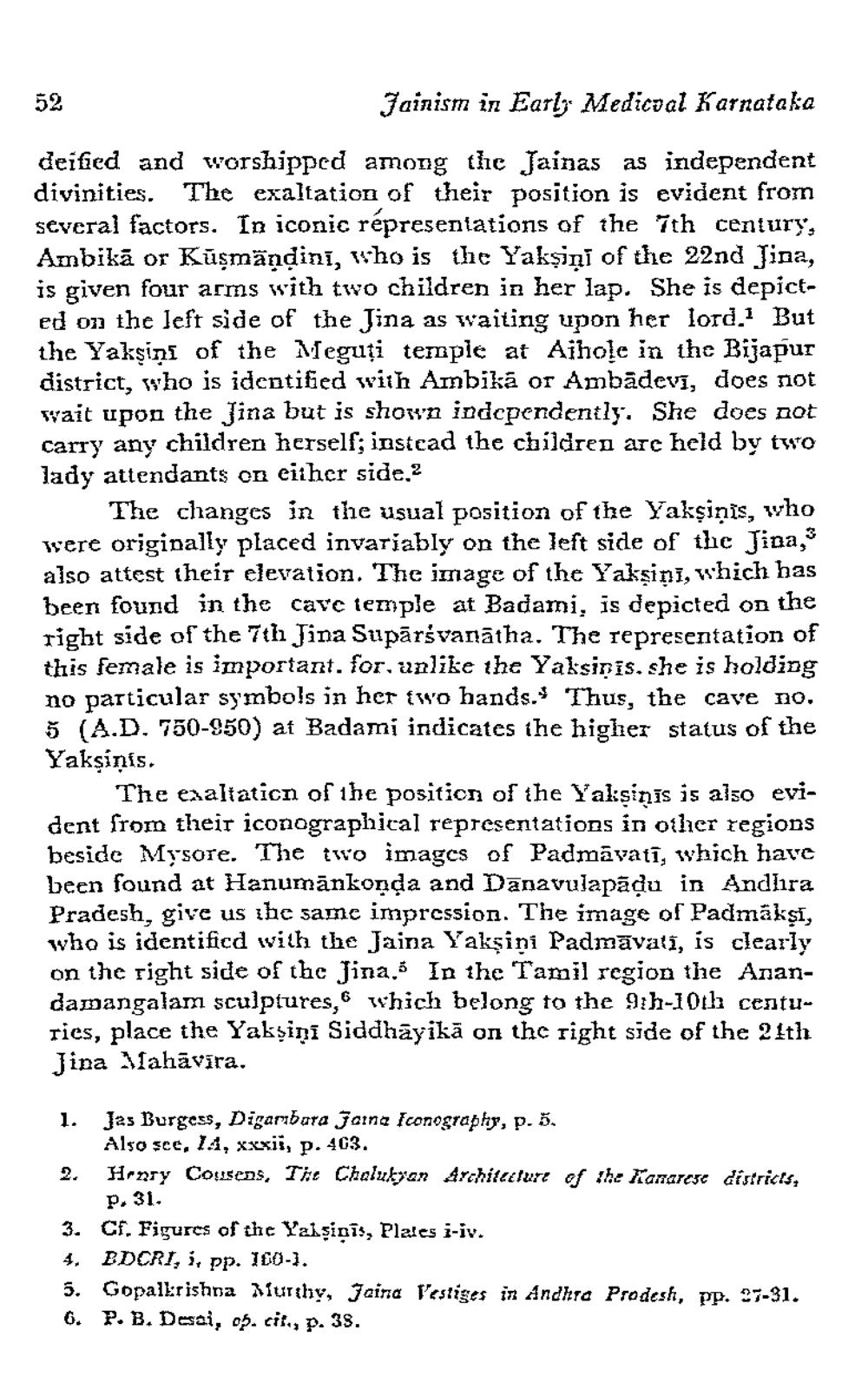________________
52
Jainism in Early Medicoal Karnataka
deified and worshipped among thic Jainas as independent divinities. The exaltation of their position is evident from several factors. In iconic representations of the 7th century, Ambikā or Kūşmändini, who is the Yakşiņi of the 22nd Jina, is given four arms with two children in her lap. She is depicted on the left side of the Jina as waiting upon her lord. But the Yakșini of the Meguți temple at Ajhole in the Bijapur district, who is identified with Ambikā or Ambādevī, does not wait upon the Jina but is shown independently. She does not carry any children herself; instcad the children are held by two lady attendants on either side 2
The changes in the usual position of the Yakşiņis, who were originally placed invariably on the left side of the Jina, also attest their elevation. The image of the Yakşini, which has been found in the cave temple at Badami, is depicted on the right side of the 7th Jina Supārsvanātha. The representation of this female is important. for, unlike the Yaksinīs. she is holding no particular symbols in her two hands. Thus, the cave no. 5 (A.D. 750-950) at Badami indicates the higher status of the Yakşiņís.
The exaltation of the position of the Yaksinis is also evident from their iconographical representations in other regions beside Mysore. The two images of Padmavatī, which have been found at Hanumānkonda and Danavulapāðu in Andlira Pradesh, give us the same impression. The image of Padmäksi, who is identificd with the Jaina Yakşiņi Padmāvatī, is clearly on the right side of the Jina. In the Tamil region the Anandamangalam sculptures, which belong to the 9h-10th centuries, place the Yaksiņi Siddhāyikā on the right side of the 21th Jipa Mahāvīra.
1. Jas Burgess, Digambora Jaina Iconography, p.5.
Also sce, 14, xxxii, p. 463. 2. Hrary Cousens, The Chalukyan Architecture of the lanarese districts,
p. 31. 3. Cf. Figures of the Yahşibīs, Plates i-iv. 4. BDCRI, 1, pp. 100-). 5. Gopalkrishna Aiurthy, Jaina l'estiges in Andhra Prodesh, pp. 27-31. 6. P. B. Desai, op. cit., p. 38.




